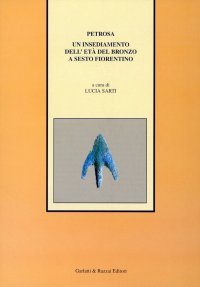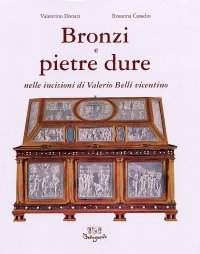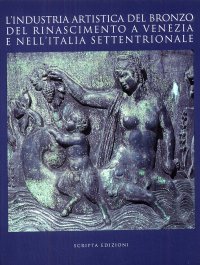La collezione dei bronzi del Museo Civico Medievale di Bologna
San Casciano V. P., 2017; br., pp. 402, tavv. col., cm 21,5x30.
prezzo di copertina: € 150.00
|
Libri compresi nell'offerta:
La collezione dei bronzi del Museo Civico Medievale di Bologna
San Casciano V. P., 2017; br., pp. 402, tavv. col., cm 21,5x30.
OMAGGIO (prezzo di copertina: € 150.00)
Petrosa. Un insediamento dell'età del bronzo a Sesto Fiorentino
Vinci, 1994; br., pp. 114, 29 ill. b/n, 16 ill. col., cm 17x24.
OMAGGIO (prezzo di copertina: € 15.49)
Bronzi e Pietre Dure nelle Incisioni di Valerio Belli Vicentino
A cura di Tubi Ravalli C.
Ferrara, 2004; ril., pp. 215, ill. b/n e col., cm 26x31.
OMAGGIO (prezzo di copertina: € 100.00)
L'industria artistica del bronzo del Rinascimento a Venezia e nell'Italia settentrionale
Atti del Convegno Internazionale di Studi, Venezia - Fondazione Giorgio Cini, 23 ottobre - 24 ottobre 2007.
A cura di Avery V. e Ceriana M.
Traduzione di Ermini G.
Trento, 2008; br., pp. 480, ill. b/n, cm 21,5x29.
(Pubblicazioni del Comitato Nazionale per le celebrazioni del 550° anniversario della nascita di Tullio Lombardo).
OMAGGIO (prezzo di copertina: € 44.00)
In the Desert Margins the Settlement Process in an Ancient South and East Arabia
Michel Mouton - Schiettecatte Jeremie
Libreria Editrice L'Erma di Bretschneider
Testo Inglese.
Roma, 2014; br., pp. 336, ill. col., cm 24x28.
(Arabia Antica. Archaeological and Philological Series. 9).
collana: Arabia Antica. Archaeological and Philological Series
ISBN: 88-913-0680-0 - EAN13: 9788891306807
Soggetto: Saggi (Arte o Architettura)
Testo in: 
Peso: 1.8 kg
Evolution was endogenous, far from the main corridors of migrations and invasions. Influences from the periphery did not cause any prominent change in the remarkably stable communities of inner Arabia in antiquity. The settlement process and the way of life was primarily dictated by access to water sources and to the elaboration of ever-spreading irrigation systems.
Beyond common traits, two models characterise the ancient settlement pattern on the arid margins of eastern and southern Arabia. In South Arabia, the settlement model for the lowland valleys and highland plateaus results from a long-term evolution of communities whose territorial roots go back to the Bronze Age. It grew out of major communal works to harness water. Into a territory of irrigated farmland, the south- Arabian town appeared as a central place. Settlements constituted networks spread across the valleys and the plateaus. Each network was dominated by a main town, the centre of a sedentary tribe, the capital of a kingdom.
In East Arabia, the settlement pattern followed a different model which emerged in the last centuries BC along the routes crossing the empty spaces of the steppe, in a nomadic environment. Each community spread over no more than one, two or three settlements. These settlements never grew very large and the region was not urbanised to the same degree as in the southwest of the Arabian Peninsula. Permanent settlements were places for exchanges and meetings, for craft productions, for worship, where the political elites resided, where the wealth from long-distance trading was gathered, and where surplus from the regional economy was held. Each town was isolated, like an island in an empty space.

Manuale del saldo e stralcio. NPL e acquisto crediti incagliati immobiliari

Scripta Extravagantia. Studi in Ricordo di Ferdinando Zuccotti
Bartolomé Bermejo. Il trittico della Cattedrale di Acqui Terme
Ti credo. Un'indagine degli ispettori Irene Gatti e Stefano Sossio
Le note del colore. Nuovi dipinti antichi. [Ed. Italiana e Inglese]
Un battito d'ali. Ritrovamenti e conferme. [Ed. Italiana e Inglese]









